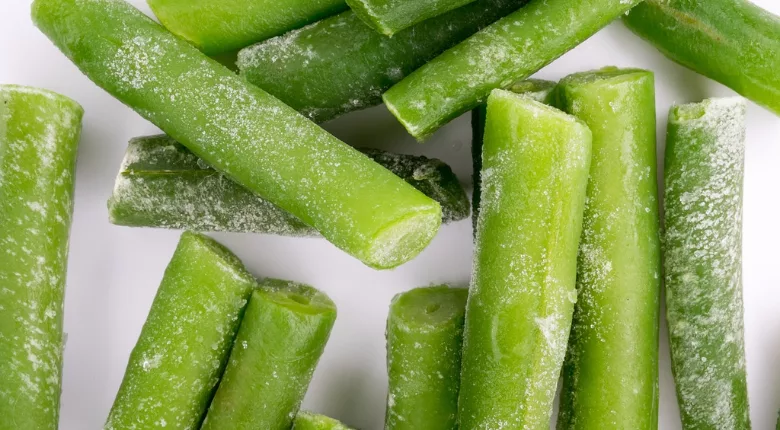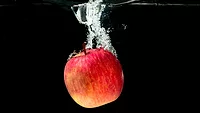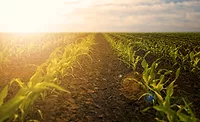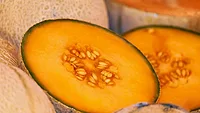EFSA Reports on Microbial Hazards of Water Used in Postharvest Produce Handling, Processing

Image credit: LeoNeoBoy via Pixabay
The European Food Safety Authority Panel on Biological Hazards (EFSA BIOHAZ) recently produced a report on the microbiological hazards associated with water used in postharvest handling and processing of fresh and frozen fruits, vegetables, and herbs.
To inform guidance on the use of water in the production of fresh and frozen fruits, vegetables, and herbs (the commodities), EFSA asked BIOHAZ to investigate:
- Microbiological hazards associated with the use of water in postharvest handling and processing operations of the commodities, and the routes and rates of contamination of water and the commodities
- Specific intervention strategies required to ensure the appropriate microbiological quality of water used for postharvest handling and processing operations of the commodities, taking into account their impact on the physiological state of the microbiological hazards present in the water
- Relevant parameters to assess the appropriate microbiological quality requirements of water used for postharvest handling and processing operations of the commodities.
To answer the charges outlined by EFSA, BIOHAZ conducted a literature review; an industry survey to gain insight on current industrial practices; data collection on foodborne illness outbreaks involving frozen fruits, vegetables, and herbs reported in the EU and non-EU countries (Norway, Switzerland, and the UK up to 2020; and collection of zoonoses monitoring data in the EU.
In the current literature, special attention has been given to microbiological hazards associated with the use of contaminated water during harvest and postharvest handling and processing, with a particular emphasis on cross-contamination during washing of the commodities. Of all the various food industry sectors, fresh and frozen fruits, vegetables, and herbs manufacturing industries, including packing houses and processing plants, are the most water-intensive due to the consumption of water required to perform post-harvest handling and processing operations.
Based on the industry survey and literature review, most reported data focuses on washing of fresh-cut fruits, vegetables, and herbs, followed by washing of fresh-whole fruits and vegetables.
Outbreak data were found to be in line with previous EFSA opinions on food of non-animal origin, although there was evidence for an increased relative importance of some hazards, including Listeria monocytogenes, Cryptosporidium parvum, and Yersinia. However, L. monocytogenes, Salmonella, and Escherichia coli remain significant. Fresh-whole or cut leafy greens were the main vehicle of foodborne illness outbreaks associated with E. coli, norovirus, Salmonella, L. monocytogenes, Y. enterocolitica, and C. parvum. Frozen commodities, especially berries, were common vehicles for viral outbreaks. Additionally, frozen corn was the vehicle for a listeriosis outbreak. Other hazard and product combinations causing several outbreaks were sprouts and Salmonella, and kale and C. parvum.
Hazards are expected to contaminate the commodities during primary production, especially pathogens transmitted via the fecal-oral route, like Salmonella, Shiga toxin-producing E. coli (STEC), Yersinia, and C. parvum. However, hazard occurrence data along the production chain did not provide evidence for a specific point of contamination for any microbial hazard. Depending on the postharvest operation, all hazards can potentially exist in the processing plant and lead to batch-to-batch cross-contamination.
The contamination rate of process water depends on multiple variables, including the number of microorganisms in the contaminated product, the proportion of product entering the water that is contaminated, the ratio of product to water, the intervention strategies in place, and the transfer of microorganisms from product to water and vice versa. A water management plan is based on two complementary pillars:
- Preventive measures, such as good hygienic and manufacturing practices (GHPs and GMPs), including technical maintenance, training of staff, and cooling of postharvest process water
- Interventions such as water disinfection treatment and water replenishment, which must be validated, monitored, and verified under commercial operating conditions.
According to the available literature, the studied water disinfection strategies include chemical-, physical-, and biological- based treatments or combinations of the three. Their industrial-scale application is less studied than lab- and pilot plant-scale applications, and chemical-based water disinfection is more often investigated than physical and biological treatments.
Looking for quick answers on food safety topics?
Try Ask FSM, our new smart AI search tool.
Ask FSM →
According to an EU industrial survey, chlorine-based disinfectants and peroxyacetic acid (PAA), either applied alone or in combination with other disinfectants, are commonly used for treating process water used for washing fresh-whole and fresh-cut fruits and vegetables. These treatments have been shown to mitigate the increase of or reduce microbial load through lab-scale trials performed under optimum conditions. However, there is a lack of information on their efficacy under industrial conditions for most postharvest processes and for fresh and frozen fruits, vegetables, and herbs.
Only chlorine-based biocides have demonstrated the capacity to avoid accumulation of microorganisms in process water under industrial conditions. However, their application must be properly managed to achieve the desired result.
Interventions must be validated, monitored, and verified in order to constitute a good water management plan. Validation procedures allow food business operators to define the appropriate operational conditions associated with their water management strategy. Verification should be regularly conducted as part of a Food Safety Management System (FSMS), to demonstrate that applied water management strategies are working effectively and that process water achieves microbiological quality requirements. Operational monitoring parameters, used to follow up on defined process parameters and conditions, should be selected from the evaluated factors in the validation study. To have effective operational monitoring, real-time information of parameters and conditions is necessary to achieve timely corrective actions when one of the parameters or conditions is outside of its limits. The required real-time measurements must be done using calibrated devices, either off-line or with in-line methodologies.
Based on its report, BIOHAZ recommends that:
- More information be included in outbreak investigation reports, such as the origin of implicated raw fruits, vegetables, and herbs, whether the commodity has been postharvest processed, as well as possible implications of different types of water as a source for the implicated pathogen.
- Specific and clear guidelines be made available for food business operators to clarify the requirements on how water disinfection treatments can be used in the context of maintaining the microbiological quality of water used in the postharvest handling and processing operations of the commodities
- Technical guidance be developed on the procedures for validation, operational monitoring, and verification of the intervention strategies that can be applied as part of a process water management plan.









